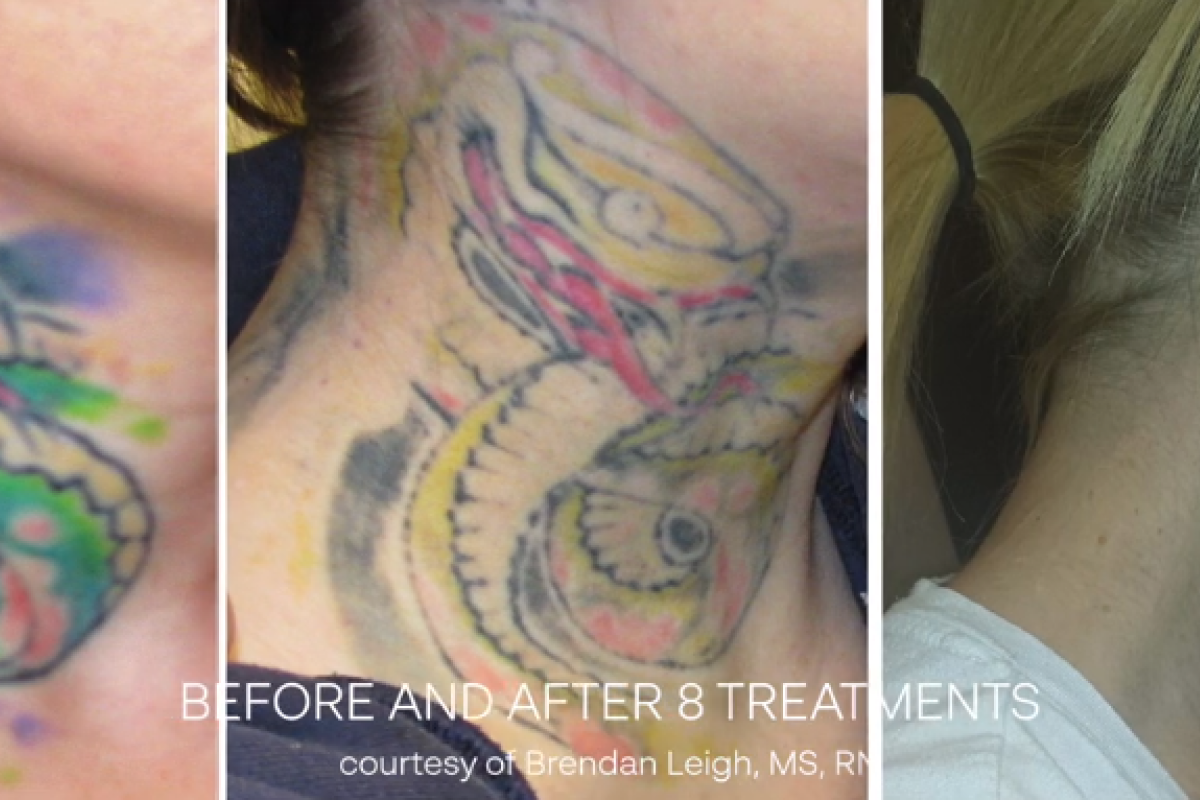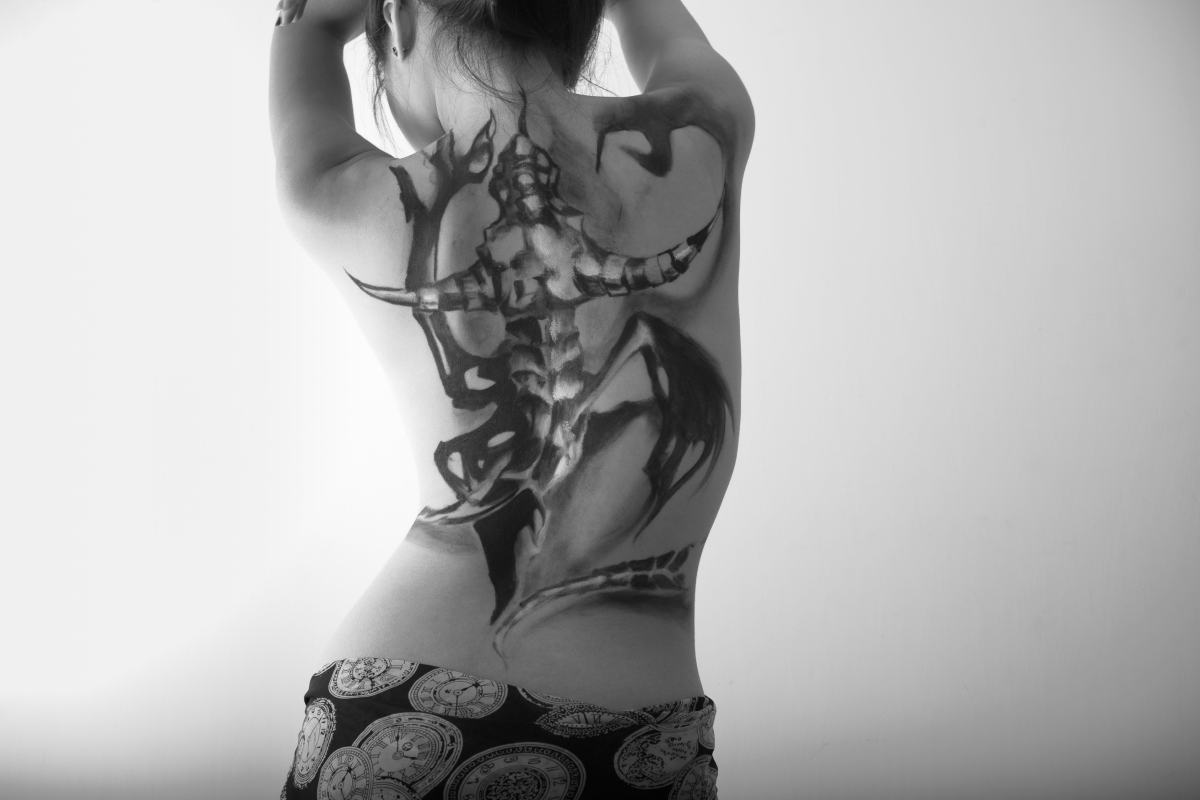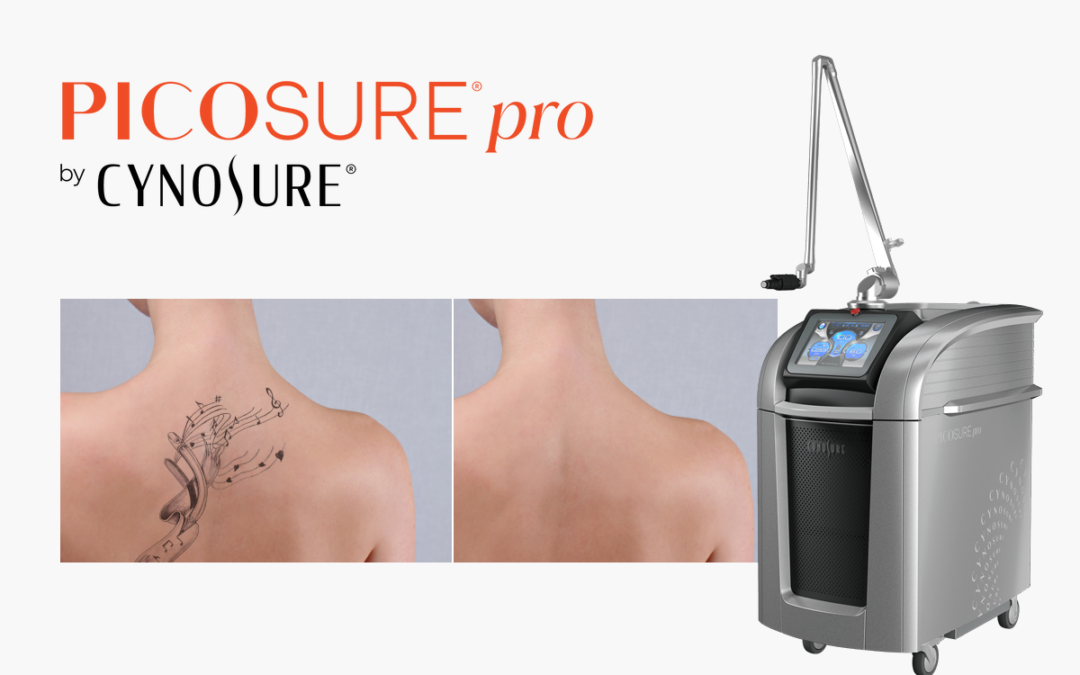Tattoos are permanent. Or, close enough—they are notoriously difficult to remove.
But in the last few years, several treatments have emerged to streamline the removal process. Some are quite effective, while others can be more time-consuming and even a little painful.
If you’re wondering how does tattoo removal work or what happens to the skin after tattoo removal, you’ve come to the right place.
In this blog, we take a close look at the process, the options at hand, and the various stages of tattoo removal. Let’s dive in.
What Are the Most Effective Methods To Remove Tattoos?
There are three popular methods to remove tattoos:
![]() Dermabrasion
Dermabrasion
![]() Surgical Excision
Surgical Excision
![]() Laser Removal
Laser Removal
Surgical excision is more effective than the other two. But if you opt for dermabrasion, you can do it in a single sitting. Each process also has its fair share of disadvantages.
Dermabrasion can be expensive, often costing hundreds or even thousands of dollars. With surgical excision, you run the risk of scarring, and with laser removal, you may be required to go in for additional sittings.
Laser removal remains the most popular of all three options, largely thanks to one extremely effective treatment: PicoSure Pro.

Why Is PicoSure Pro the Most Popular Treatment?
One of the most advanced laser tattoo removal processes on the market today, PicoSure Pro counters some of the most common problems associated with tattoo removal: it requires fewer sittings and is much less painful.
One of the most frequently asked questions about tattoo removal is, can you remove tattoos with color? With PicoSure Pro, the answer is yes. It can remove even the most stubborn pigments, including vivid reds, yellows, and oranges.
How Does PicoSure Pro Work?
So how does laser tattoo removal work? The basic principle involves a high-intensity light beam with a laser that breaks up the pigment.
The laser’s wavelength is adjusted depending on the color. Because black absorbs all wavelengths, it is generally considered the easiest color to remove.
Tattoo removal with PicoSure Pro differs slightly from this traditional process. The energy generated by the laser travels to the deep dermis of the skin at a trillionth of a second, and it doesn’t touch the non-tattooed layer of the skin. It also uses pressure instead of heat to target the pigment, resulting in a less painful process.
What Is the Process?
PicoSure Pro delivers light at a specific wavelength, which is absorbed by the ink particles. This creates a change in pressure. The particles break down and are eliminated by the body’s lymphatic system.
At the beginning of the procedure, the technician will apply a numbing agent over the target area. After 20 minutes, you will be ready for a fairly straightforward session with the laser.
If you live in Los Angeles, contact LA Beauty Skin Center for an appointment and more details about the procedure.

How Long Does It Take To Remove a Tattoo with PicoSure Pro?
How long does tattoo removal take? The answer depends on the size of the tattoo, the complexity of the design, and the colors.
On average, patients are expected to attend four to five sessions, with intervals of six to eight weeks.
For smaller tattoos, a noticeable difference can be seen even after the first session. Larger, more intricate designs can require up to ten sessions.
Tattoo Removal Healing Process: How To Care for Your Skin
While the process is mostly free of complications, PicoSure Pro treatment does require some aftercare.
Newly-treated skin is much more sensitive to the sun. Patients should avoid sun exposure for two to four weeks after the procedure. It is best not to dive in a pool or go to the beach.
The wound must be regularly treated and cleaned, while certain photosensitizing medications (such as Accutane) should be avoided.
If you experience discomfort, apply a cold press to the area. Do not pick at scabs to prevent tattoo removal scars.
Can Tattoos Be Removed Completely with PicoSure Pro
So how effective is laser tattoo removal?
Results vary depending on the design. But PicoSure Pro is generally considered one of the most effective treatments, meaning it completely removes all traces of a tattoo.
Its ability to target even the most stubborn colors makes it more promising than other treatments.
To view laser tattoo removal before and after pictures, get in touch with trusted facilities like LA Beauty Skin Center.
How Painful Is Tattoo Removal with PicoSure Pro
Another frequently asked question is, how painful is tattoo removal? Unfortunately, the process isn’t completely pain-free.
Most people who undergo the treatment experience mild discomfort, not unlike getting a tattoo.
While the tattoo removal healing process generally involves little to no downtime, you should look out for side effects like hyperpigmentation, redness, or swelling.

Does Tattoo Removal Leave Scars with PicoSure Pro?
Tattoo removal scarring is a big fear for those who undergo this treatment.
Fortunately, PicoSure Pro is highly unlikely to cause any permanent scarring. This is because the laser uses pressure instead heat—it breaks up tattoo ink with minimal discoloration.
What Are the Risks or Complications?
That said, there is still a small risk of scarring, especially if the treatment isn’t carried out by a trained professional.
There is also a chance of hypopigmentation, infections (if the wound isn’t treated correctly), or mild reddening or swelling of the skin.
PicoSure Pro treatment is generally considered a very safe procedure.
Conclusion
How much does tattoo removal cost? Depending on the size and complexity, the tattoo removal process can cost hundreds to thousands of dollars. A single session could range between $200 to $400.
For a better idea of the PicoSure Pro price in your specific case, book an appointment at LA Beauty Skin Center. A leading medical spa in Los Angeles, we offer a range of treatments delivered by some of the most talented professionals in the country.

